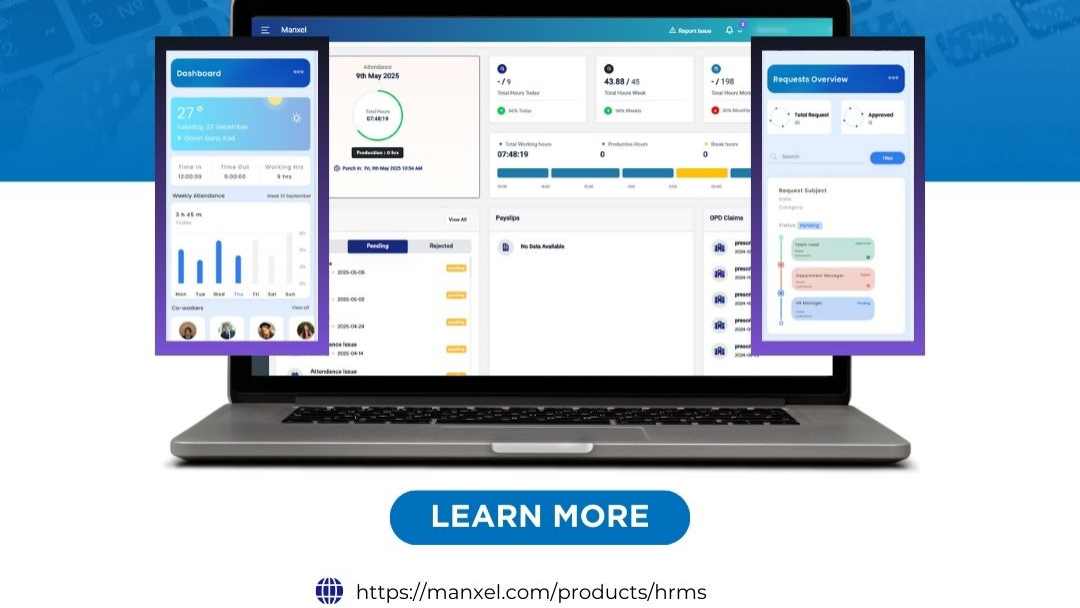HRMS System: Driving Efficiency and Growth in the Digital Age In a time where digital transformation is no longer optional, companies must reassess how they manage their most important asset—people. Outdated spreadsheets, manual attendance sheets, and scattered employee records can no longer support fast-growing businesses. The modern solution? A comprehensive HRMS system. A Human Resource Management System (HRMS) simplifies, automates, and optimizes every aspect of workforce management. It does more than just make HR teams efficient—it helps build a more resilient, data-driven, and employee-centric organization. 1. Understanding the Core Functions of an HRMS System An HRMS system is a unified software platform that integrates all core HR functions—making them accessible, automated, and streamlined. From hiring and onboarding to payroll and performance management, an HRMS helps HR professionals manage it all in one place. Key Modules Found in Most HRMS Platforms: Employee Information Management Stores and updates personal, employment, and performance data for each employee. Recruitment and Onboarding Manages job postings, candidate tracking, offer letters, and orientation programs. Time & Attendance Tracking Uses biometric data, clock-in/out systems, or apps to monitor working hours and leaves. Payroll Processing Automatically calculates salaries, deductions, bonuses, and generates payslips. Performance Appraisal Tracks KPIs, reviews goals, and facilitates manager feedback or 360-degree reviews. Training and Development Assigns learning modules, tracks completion, and reports on skill development. Compliance Management Keeps you up to date with legal requirements like labor laws, tax codes, and workplace safety standards. With these features, an HRMS system reduces redundancy, minimizes human error, and ensures a smooth experience for both employees and HR departments. 2. How an HRMS System Transforms Modern Organizations Integrating an HRMS system into daily operations doesn’t just modernize HR—it transforms the entire business. Here's how: A. Reduced Administrative Workload Manual data entry and paperwork take a toll on HR departments. An HRMS automates repetitive tasks, freeing up time for strategic initiatives like workforce planning and employee development. B. Consistent and Centralized Data All employee records are stored in a centralized location, ensuring consistency across departments. This leads to better decision-making, faster data retrieval, and easier reporting. C. Empowered Employees Self-service portals allow employees to check their pay history, apply for leave, view performance reviews, and manage personal details—without waiting for HR support. This autonomy builds trust and enhances the employee experience. D. Faster and Smarter Hiring HRMS platforms speed up the entire recruitment funnel—from job posting to candidate evaluation—using AI tools, scoring mechanisms, and automated follow-ups. E. Better Compliance and Security HRMS systems are designed with legal frameworks in mind. They can store important documents, set compliance alerts, and manage audit trails, significantly reducing the risk of fines and legal disputes. F. Strategic HR Management Data-rich dashboards provide insights into attrition, engagement, training outcomes, and more. HR leaders can use this data to create better policies, improve culture, and allocate resources wisely. 3. Tips for Successfully Implementing an HRMS System Switching to an HRMS system is a major shift—but with the right approach, it can be seamless and highly rewarding. A. Set Clear Goals Start by identifying your primary objectives. Do you want to automate payroll? Improve performance tracking? Enhance compliance? Your goals will guide your system selection. B. Choose the Right Vendor Not all HRMS systems are created equal. Look for vendors that: Offer modular features so you can scale up Provide mobile access for hybrid workforces Have integration options with existing platforms (like ERP or accounting software) Include strong customer support and implementation services C. Get Buy-In From Leadership and Employees HR alone cannot drive a digital shift. Involve department heads, managers, and even employees in the process to ensure that the system meets everyone’s needs. D. Train Your Teams Once deployed, provide hands-on training and FAQs to guide users. Make support available through webinars, tutorials, and help centers. E. Monitor Adoption and Optimize Use analytics to see which features are being used and where employees face roadblocks. Regularly update processes based on feedback to maximize the system’s ROI. Conclusion: HRMS System as the Backbone of Modern HR The role of HR has evolved far beyond hiring and payroll—it’s now a strategic pillar of business success. In this environment, having the right tools is no longer optional—it’s essential. An HRMS system brings structure to chaos, replacing outdated practices with intelligent, scalable, and integrated solutions. It reduces operational costs, boosts employee engagement, and equips HR leaders with the tools they need to shape company culture and support growth









